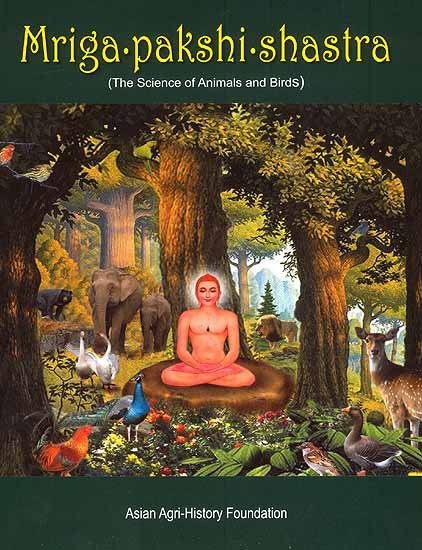Animal Kingdom (Tiryak) in Epics
by Saranya P.S | 2019 | 51,616 words | ISBN-10: 8190396315 | ISBN-13: 9788190396318
An English study the Animal Kingdom (Tiryak) in Epics.—The present thesis is based entirely on Ramayana and Mahabharata although an attempt is made to analytically compare the Animal kingdom with Mriga-pakshi-shastra—‘The ancient Indian science of of Animals and Birds’....
Chapter 4.3 - Ancient Classification of Animals and Birds
Practice of classifying and distinguishing living beings is very old in India Hamsadevas finer distinction of the various Animals and birds has to be traced back such earlier classifications.[1]
In the purushasukta of Rigveda(x.90) living beings grouped into three categories
- Vayavya: Those can fly in the air,
- Aranya: Those dwell in the forest,
- Gramya: Those resides in villages or human habitats.
Smritis[2] and puranas contain various theories of creation where living beings are broadly classified into four categories.
- Andaga: Born from egg, birds, snakes and so on.
- Jarayuja: Born from embryo: Humans, four legged animals etc.
Shvedaja: Literally born from sweat: insects and worms. - Udbhija: Born from earth by breaking open its crust: Trees, creepers and so on.
Another classification[3]
- Creatures having two rows of teeth (ubhayadat),
- Kinnara (semi-devine beings),
- Vanara (which are similar to humans),
- Matsya (fish),
- Vihanagama (birds),
- Pashu (cattle and other such animals useful to humans),
- Mriga (dear and other forest dwelling animals),
- Vyala (wild beasts like lion tiger etc.).
Creatures do not having two rows of teeth small creatures like insects and worms. Trees creepers etc.
Jains classified them into based on the numbers of sense organs.
- Trees and plants (having the sense of touch),
- Insects (having the sense of touch and taste),
- Insects like ants (having sense of touch taste and smell),
- Honeybees (touch, taste, smell, sight),
- Mammals (touch, taste, smell, sight, hearing),
- Hearing (touch, taste, smell, sight, hearing, mind),
These primary distinction must have further led into finer classifications and in Mrigapakshishastra: given sub groups or such types even of a single creature.
These chapters are further divided into sub divisions describing the various types grouped under the common heading.
The method of presentation of the subject is stated by Hamsadeva as follows:[4]
- Mating season,
- Conception,
- Period of full growth prior to birth of the young ones,
- Description of the young ones and their growth,
- Distinction by color,
- Destinction by behaviour,
- Destinction by species,
- The female: Nature and characteristics,
- Longevity,
- Period,
- Distinction by trigunas like satva, rajas, tamas…etc.
Hamsadeva follows this pattern throughout the text. He is well aware of the fact that every creature due to endless permutations and combinations of characteristics and behaviour can have multiple variants and that only the principal types could be described in the Mrigapakshishastra cannot be exhaustive and that several factors are responsible for giving rise to more and more variants as is clear from his concluding points.
Animals and birds are of different origin, have different qualities, like different types of food, indulge in various good or bad acts depending on the habitat and period of time. The surroundings like lakes, sea, big or small rivers, mountain regions, forest trees, earth, sun, wind and so on. As also difference in the ambience and daily activity affect the characteristics of animals and birds. Taking these and such other factors into account experts should gradually learn of their own accord, through observation, their colors, food habits, gaits, appearance, voice and so on and assess them.
Footnotes and references:
[1]:
Mrigapakshishastra [mriga-pakshi-shastra] : science of animals and birds p.290
[2]:
Manusmriti.I.39-46
[3]:
Mrigapakshishastra [mriga-pakshi-shastra] p.291
[4]:
Ibid p.169a
